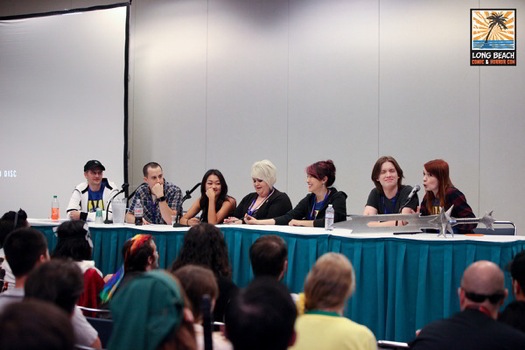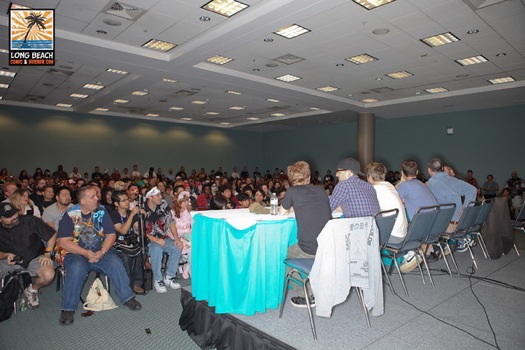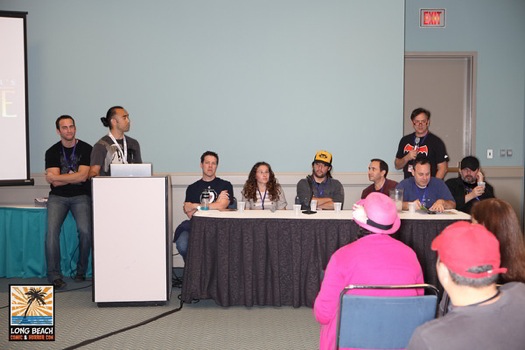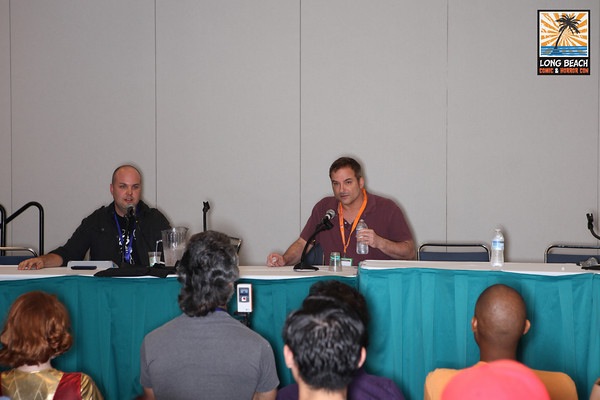by Mike Scigliano
San Diego Comic Con is arguably the mecca of all comicons. It features the most robust programming schedule that any comicon can create. Comics, movies, kids, television, games, books and much, much more pack every minute of its crowded programming grid. It’s what many, if not most of the comicon attendees look forward to each year. Attendees plan their schedules to the minute to make sure they get a chance to get a seat at their favorite panels. Some will go so far as to camp out in a panel room from early in the day, moving up as each panel lets out to ensure they have the best seat they can possibly get.
Obviously this is the extreme case when it comes to comicon programming. The likelihood of having a programming schedule as massive as SDCC’s is slim to none. Even New York Comic Con, one of the largest shows in North America after SDCC, doesn’t feature a programming grid as vast. So what does this mean for your own comicon programming schedule? Probably, it means very little when it comes down to the details and content; however, overall it there are certainly some things you can look at and put to good use at your own show.
Let’s talk about some of the reasons a strong programming schedule can be a big boost to your comicon in so many ways.
First of all, it is a major selling point to potential attendees. It goes back to the idea that you are selling an experience when you sell a ticket to you your comicon. Programming is certainly a big part of that experience for a good percentage of the people coming to your show. You really want to create a feeling of fulfillment for your attendees when they leave. Was the price of admission worth the experience? That’s what attendees will judge the show by at the end of the day (or weekend). Frankly, the worst thing you want to hear is “Eh, it was ok. The show floor was cool but after a couple hours I had seen everything there was to see.” Having programming extends the average attendee experience exponentially.
Second, it serves as a means to keep your attendees engaged all weekend long. Two or three days of a comicon can get old quick if all the attendees have to experience is the show floor. Programming breaks up the day and gives attendees some excellent content to consume and enjoy. And most importantly, something to talk about before, during and after your comicon. The more they talk about how great an experience they had at your comicon, the better it is for your show’s future. Personally, I love checking in with attendees as they leave the hall late in the day to see how their experience was and what they enjoyed the most. Not only is it great to engage your attendees, but it can be very enlightening as well. At Long Beach Comic & Horror Con we’ve learned a great deal from the individual experiences related to us, and we’ve been able to integrate that feedback the following year.
Third, the panel rooms that your programming is held in hold a good amount of attendee bodies, which gives a bit of breathing room on the floor. I always look at the programming schedule in conjunction with the show floor to get a good idea of how many attendees have packed a comicon. Just because you don’t see them on the show floor doesn’t mean they aren’t there. Many attendees will float in an out between the show floor and the panel rooms all weekend long.
Now that you understand just how important programming can be at a comicon, how do you go about putting together a programming schedule that attendees will really enjoy? The first rule is to have diversification. Your attendees are unique and have unique interests. If you can provide a programming schedule that appeals to many different types of interests, you are definitely looking at the basis for successful programming. Make sure you include panel topics that vary, such as creator/guest spotlights, how-to tutorials presented by established creators, comics, television & film, anime & manga, screenings and the list goes on. If you have five panel rooms with one panel per hour each day, that adds up to anywhere from 75 to 100 panels. See how easy it is to diversify a number that big?
A few tips for achieving a nice balanced programming schedule are as follows. First of all, consult with your exhibitors. Publishers, creators and even retailers have content or great ideas for content that would certainly make for compelling panels. Second, interact with your attendees and ask them what THEY WANT in a panel. Social media is perfect for this. A few hours a day for a week or so can net you so many wonderful ideas for content to fill your programming schedule with great panels. Finally, ask yourself what would interest you? What sort of content would pique your interest enough to be certain you didn’t miss it?
Programming, overall, is a very important aspect to successful comicon. In a way, it legitimizes the event and says to a potential attendee that the comicon in question is going all out and providing a full experience for the attendee to take part in and enjoy. For example, at our one day Long Beach Comic Expo we saw a sharp increase in attendance the year we added a programming schedule in 2010. Attendees had more to do and, as a result, stayed longer.
Happy attendees will be more willing to spend their money on that fantastic indie comic in Artist Alley, that great graphic novel or take a chance on something new they discovered in the dollar bins. And that makes your exhibitors happy. It’s a win all around. Create that great experience and success will follow.
Comments and questions are encouraged either below in the comments section or via twitter.
-scig
@mikescigliano
ComiCON-versation Column Archive










